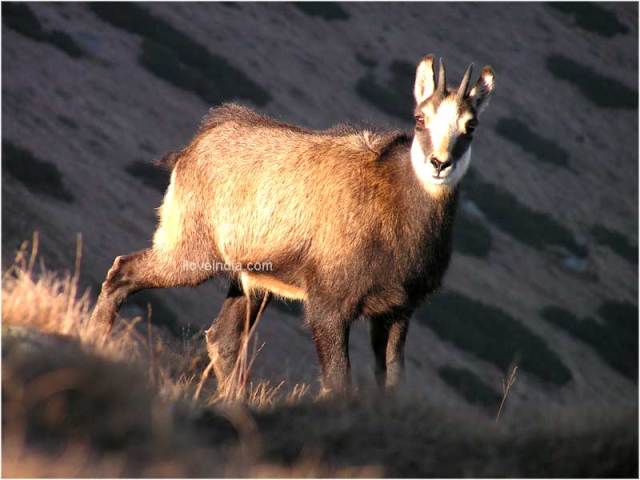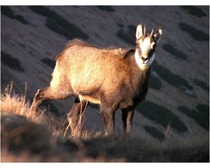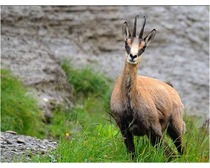Chamois are widely found in the forests and savannahs of Africa. In this article, we bring for you some interesting facts and amazing information on the Chamois.
Facts About Chamois
Chamois is a large-sized goat-antelope, with its home in European mountains, including the Carpathian Mountains of Romania, the European Alps, the Gran Sasso region of the central Italian Apennines, the Tatra Mountains, the Balkans, parts of Turkey, and the Caucasus. Today, chamois are also found in parts of Switzerland, Austria and Romania. They were introduced in New Zealand by Austrian Emperor, Franz Joseph I. Chamois is an herbivore animal and feeds on purely plant-based diet. Its habitat comprises of steep, rocky and rugged terrain. It is a timid and remarkably agile animal. Read on to know some more interesting facts and amazing information on the chamois.

Facts About Chamois
Binomial Name: Syncerus caffer
Kingdom: Animalia
Phylum: Chordata
Subphylum: Vertebrata
Class: Mammalia
Order: Artiodactyla
Family: Bovidae
Subfamily: Caprinae
Genus: Rupicapra
Species: R. Rupicapra
Height: 75 cm (30 inches)
Length: 10 to 15cm (4 to 6 inches)
Weight: 14 to 62 kg (31 to 136 lb)
Life Span: 14 to 22 years
Diet: Herbivorous (grasses, leaves, buds, shoots, fungi)
Habitat: Steep cliffs and alpine meadows
Age of Sexual Maturity: 3.5 to 4 years (males); 2.5 years (females)
Gestation Period: 170 days
Number of Offspring: One, rarely two
Interesting & Amazing Information On Chamois
- Chamois are strictly protected animals, under the Europeans Habitats Directive.
- The antelope species resembles a goat, but is much more graceful in build than the latter.
- Chamois has a pale yellow head, with two straight shafts that are slightly curved backward, until the tip points directly downward.
- By its nature, chamois is a timid animal, with a keen sense of smell.
- There are two species of chamois in the genus - R. rupicapra and R. Pyrenaica.
- The sub species of chamois are - R. r. tatrica (Tatra chamois), R. r. balcanica (Balkan chamois), R. r. carpatica (Carpathian chamois), R. r. cartusiana (Chartreuse chamois), R. r. rupicapra (Alpine chamois), R. r. asiatica (Anatolian chamois or Turkish chamois), R. r. caucasica (Caucasian chamois) and R. r. ornata (also Rupicapra pyrenaica ornata) (Abruzzo chamois).
- In terms of its habitat, the chamois has its range in the snow lines in summers and lower areas in winters.
- Chamois are often hunted for their hide, which is used to make garments, for polishing and for straining mercury.
- The animal is found in two mountainous areas in Spain, where it is known as rebeco in the Cordillera Cantábrica and sarrio in Pyrennes.
- It has a smooth reddish brown coat, which is lighter brown in summers and turns darker in winters.
- The surefooted and nimble feet of chamois allow them to travel up to 50 kmph over steep and uneven ground.
- Chamois females and kids wander around in small family flocks of 5 to 30 members, while the adult males remain solitary.
- The tuff of hair of Chamois is traditionally worn on hats throughout alpine countries.
- The chamois found in New Zealand weighs 20% less than its same-aged counterparts in other countries, because of limited food supply.
- Chamois meat is considered very tasty and hence, the animal is also hunted for its meat.
- A negative trait of chamois is that it is unable to judge danger from the upper side and hence, become an easy shot for the hunters.


See also
More from iloveindia.com
- Home Remedies | Ayurveda | Vastu | Yoga | Feng Shui | Tattoos | Fitness | Garden | Nutrition | Parenting | Bikes | Cars | Baby Care | Indian Weddings | Festivals | Party ideas | Horoscope 2015 | Pets | Finance | Figures of Speech | Hotels in India : Delhi | Hyderabad | Chennai | Mumbai | Kolkata | Bangalore | Ahmedabad | Jaipur
- Contact Us Careers Disclaimer Privacy Policy Advertise With Us Lifestyle Sitemap Copyright iloveindia.com. All Rights Reserved.




